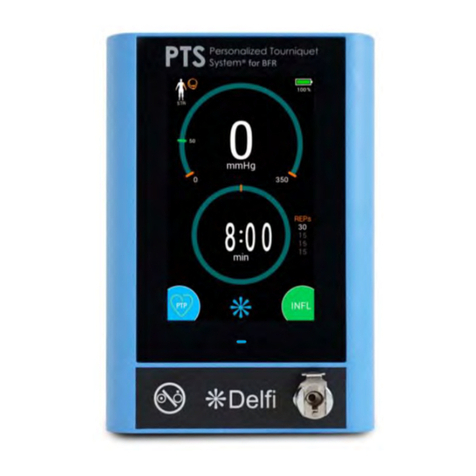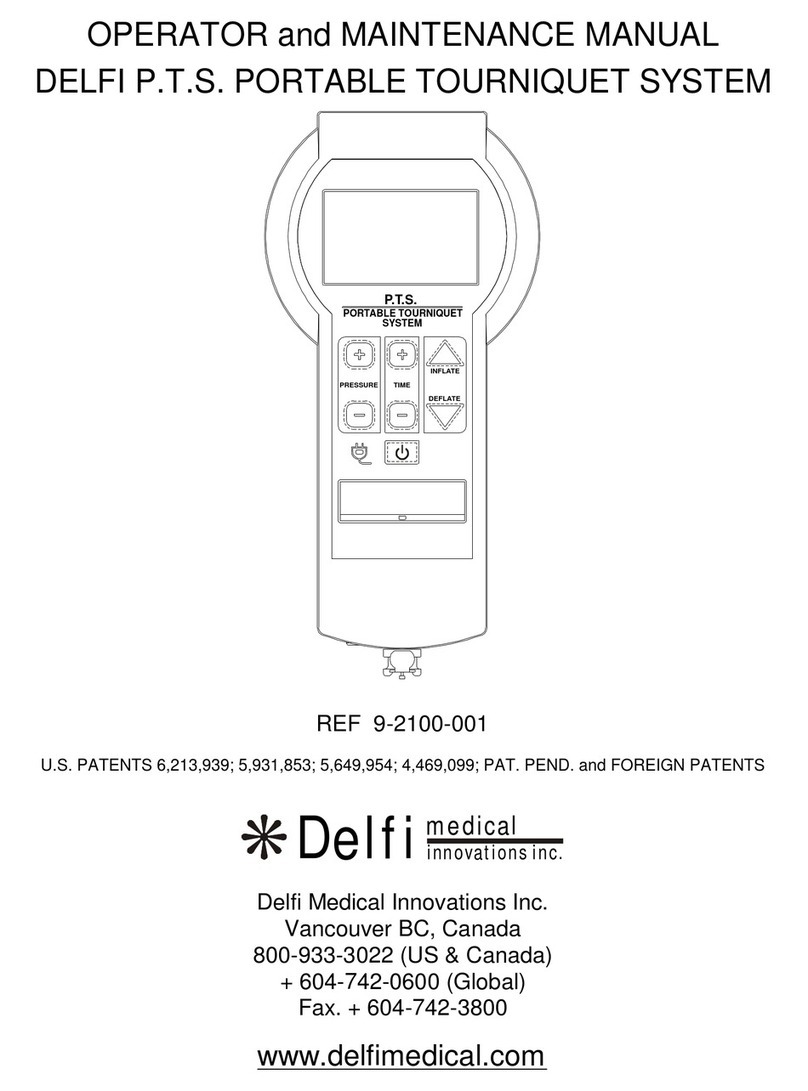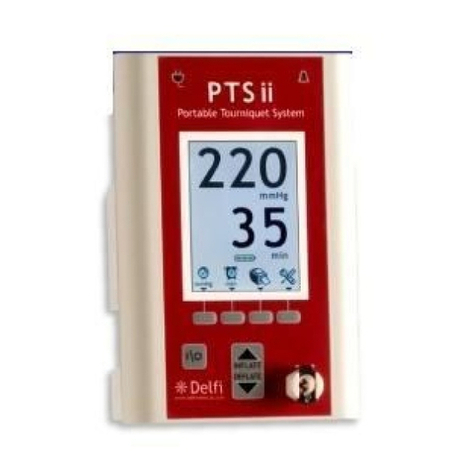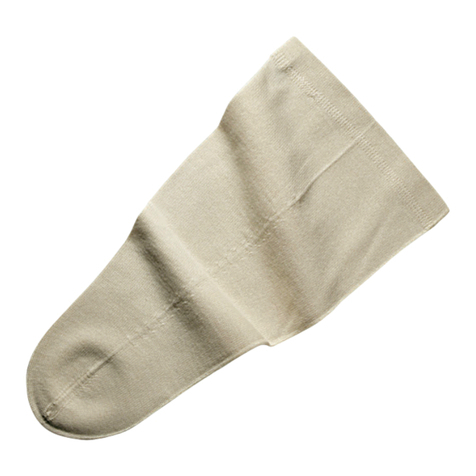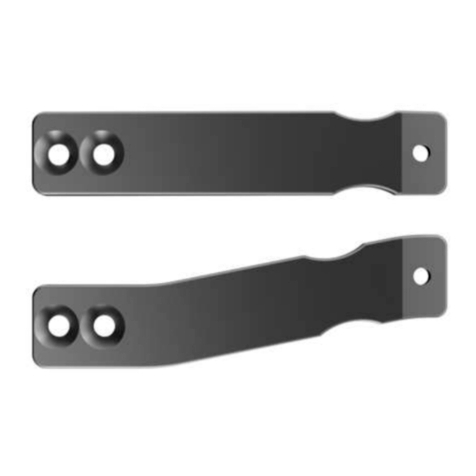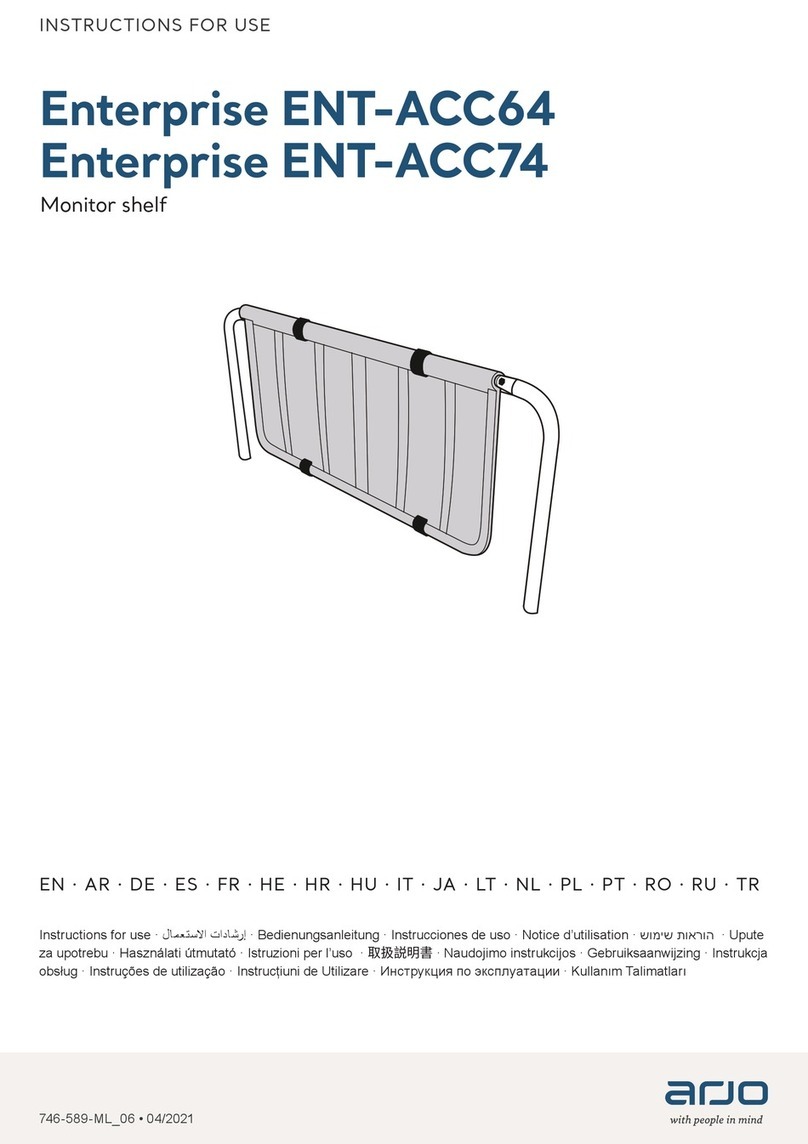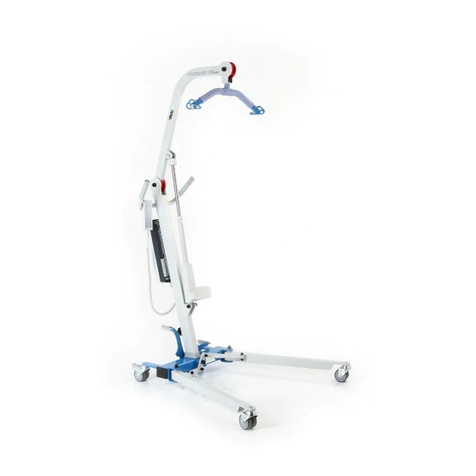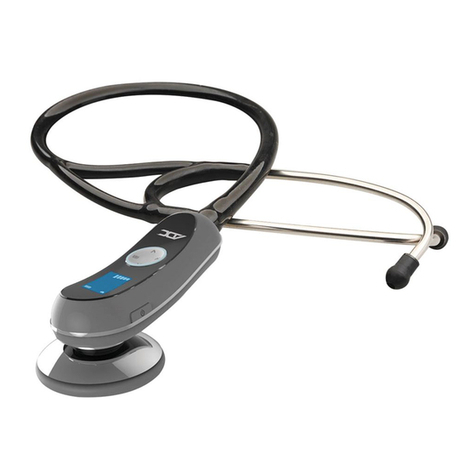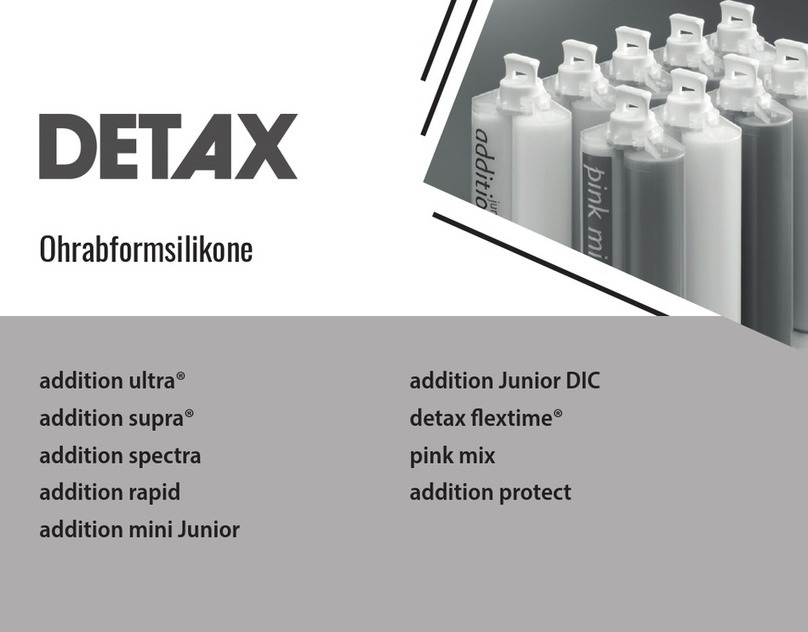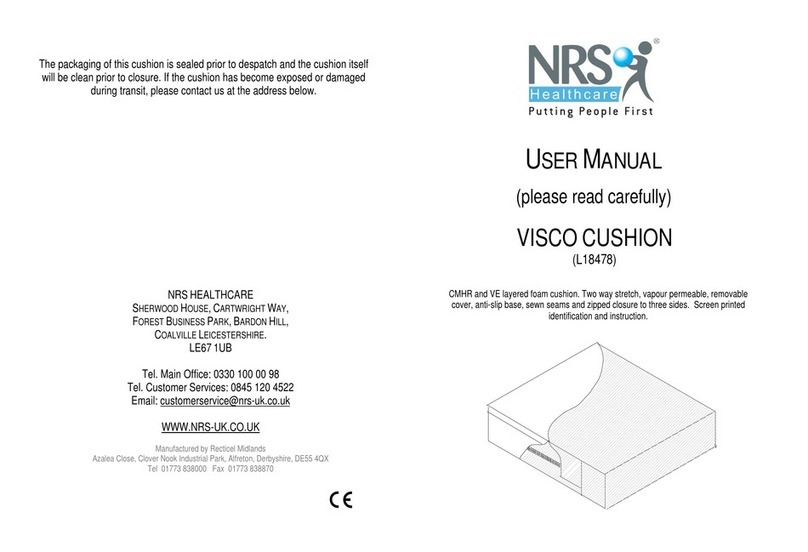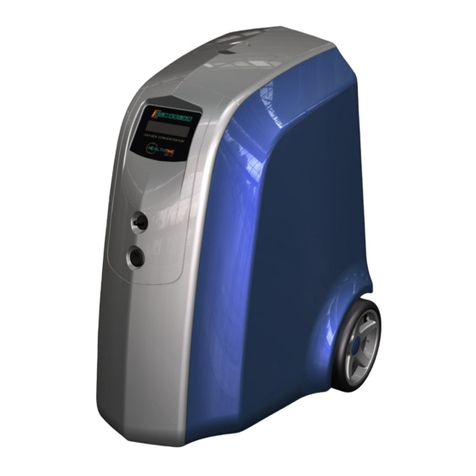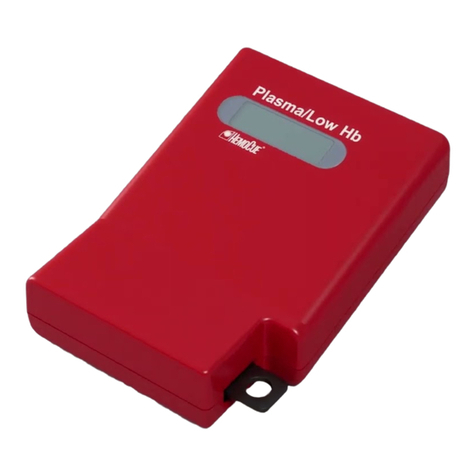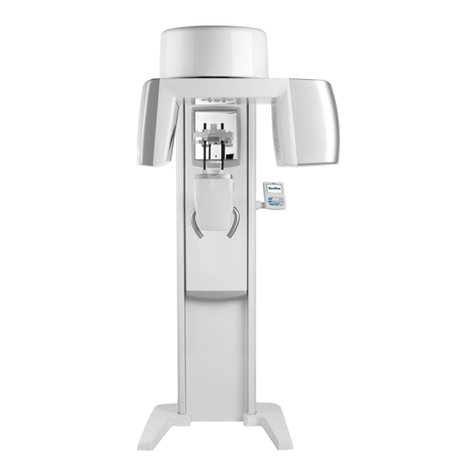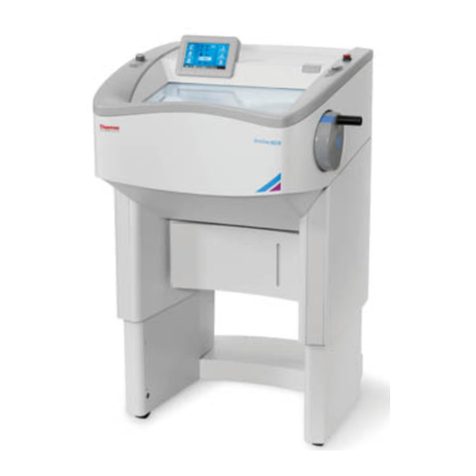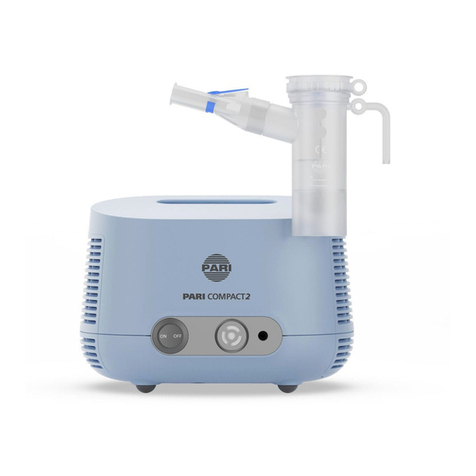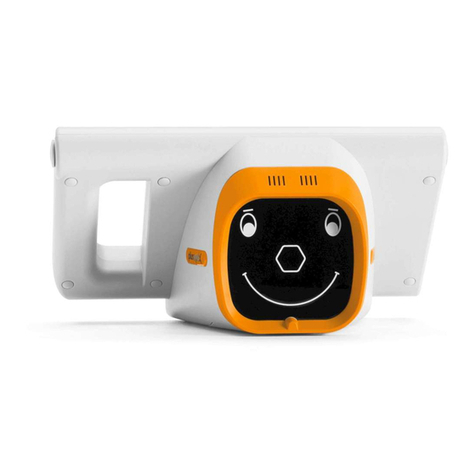Delfi PTS ii User manual

ENGLISH
PTS ii Personalized
Tourniquet System®
Operator & Maintenance
Manual
REF 9-2200-001B/R
delfimedical.com
Pat.:www.delfimedical.com/patents


WARRANTY
1WARRANTY
LIMITED TWO-YEAR WARRANTY (North America only)
SCOPE OF LIMITED WARRANTY
Delfi Medical Innovations Inc. (‘Delfi’) warrants the components of the PTS ii Personalized Tourniquet System (‘product’)
from date of purchase as follows: PTS ii instrument and accessories (2 years), and rechargeable battery (90 days). During
the warranty period, Delfi will repair or replace, at its option, any product which is defective in materials or workmanship
or which fails to meet the published specification for that model. This Limited Warranty is made only to the original
purchaser of the product and is non-transferable. The remedies described in the Limited Warranty are the exclusive
remedies for breach of warranty. THIS WARRANTY SHALL NOT APPLY TO ANY PRODUCT WHICH HAS BEEN ALTERED,
MODIFIED, DISASSEMBLED OR SERVICED BY ANYONE OTHER THAN DELFI STAFF IN ANY WAY, OR WHICH HAS BEEN
SUBJECTED TO MISUSE OR ABUSE.
DISCLAIMER OF IMPLIED WARRANTIES
The foregoing Express Limited Warranty is given in lieu of any and all other express or implied warranties. DELFI MAKES
NO OTHER WARRANTIES INCLUDING THE IMPLIED WARRANTIES OF MERCHANTABILITY OR FITNESS FOR A PARTICULAR
PURPOSE.
LIMITATION OF REMEDIES
In no case shall Delfi Medical Innovations Inc. be liable for any special incidental or consequential damages whether
based on breach of warranty or other legal theory. Some states do not allow limitations on warranties or on remedies for
breach in certain transactions. In such states, the limits in this paragraph and the preceding paragraph do not apply.
WARRANTY CLAIMS
In the event of a warranty claim within the warranty period please take the following steps:
1. Notify Customer Service Department, Delfi Medical Innovations Inc. at 800-933-3022 or email info@delfimedical.com.
Please provide details about the nature of the problem and include the product serial number. Upon receipt of this
information, Delfi will provide a date for service and a return shipping authorization.
2. Upon receipt of the shipping authorization, forward the equipment, freight prepaid, to the location specified in the
shipping authorization.
Your compliance with these steps will help ensure that you receive prompt warranty service for your product.
WARRANTY (Outside North America)
SCOPE OF WARRANTY
Unit Serial Number _________________
AC Power Supply Serial Number ________________

CONTENTS
2CONTENTS
1GENERAL INFORMATION .................................. 4
INTENDED USE .....................................................4
CONTRAINDICATIONS...........................................4
WARNINGS ..........................................................4
PRECAUTIONS IN USE ...........................................5
ADVERSE EFFECTS.................................................7
SPECIFICATIONS ...................................................7
EN 60601-1 CLASSIFICATION.................................9
EMISSIONS/IMMUNITY ........................................9
2OPERATING INSTRUCTIONS ............................ 11
INITIAL INSPECTION............................................11
FEATURES...........................................................11
TOUCHSCREEN BUTTONS AND ICONS ............................17
INITIAL SETUP ....................................................20
TESTS AND CHECKS.............................................20
AUTOMATIC DIAGNOSTIC AND CALIBRATION CHECKS...21
MANUAL TESTS AND CHECKS.........................................23
OPERATION........................................................26
SETTINGS ...........................................................30
LEAK TEST ......................................................................30
SYSTEM DEFAULTS MENU..............................................33
ALARM AND WARNING CONDITIONS..................34
PRESSURE ALARMS ........................................................34
STATUS INDICATOR COLORS AND AUDIBLE TONES ........34
ALARM AND WARNING CONDITION, AND ERROR CODE
TABLES...........................................................................35
ELECTROMAGNETIC COMPATIBILITY (EMC)
GUIDANCE TABLES .............................................42
3MAINTENANCE ............................................... 46
GENERAL MAINTENANCE INFORMATION............46

CONTENTS
3CONTENTS
PERIODIC MAINTENANCE................................... 46
CALIBRATION..................................................... 47
LEAK TESTING..............................................................50
BATTERY TESTING AND REPLACEMENT...............50
BATTERY TESTING........................................................51
BATTERY PACK REPLACEMENT ....................................51
INTERNAL HARDWARE SERVICING...................... 52
TROUBLE SHOOTING GUIDE ............................... 52
TROUBLESHOOTING ....................................................52
ACCESSORIES AND REPLACEMENT PARTS ...........54
CONTACT INFORMATION ...................................54
4WARNINGS, CAUTIONS & SYMBOLOGY...........55
WARNINGS, CAUTIONS & SYMBOLOGY ..............55

GENERAL INFORMATION
4GENERAL INFORMATION
1
GENERAL INFORMATION
CAUTION: United States federal law restricts this device to sale by, or on the order of a physician.
NOTES: Use this tourniquet system according to the policies in your practice setting. The following information on
intended use, precautions, contraindications, and adverse effects are offered as a guide to assist in this process
INTENDED USE
The Delfi PTS ii Portable Tourniquet System is intended to be used by qualified medical professionals to exert enough
pressure on the arterial blood flow in a limb to produce a bloodless operating field. Tourniquets are generally used for
operations lasting less than 90 minutes. Tourniquets have been found useful in surgical procedures involving the
extremities, such as:
•Reduction of certain fractures
•Kirschner wire removal
•Tumor and cyst excisions
•Knee joint replacements
•Arthroscopy of certain joints
•Replacement of finger joints
•Bone grafts
•Amputations
•Subcutaneous fasciotomy
•Nerve injuries
•Tendon repair
•Total wrist joint replacement
CONTRAINDICATIONS
Refer to the medical literature for possible contra-indications to tourniquet use. A partial list is provided below;
however, in every case the final decision to use a tourniquet rests with the attending physician.
•Open fractures of the leg
•Post traumatic lengthy hand reconstruction
•Severe crushing injuries
•Elbow surgery (where there is concomitant excess swelling)
•Severe hypertension
•Skin grafts in which all bleeding points must be readily distinguished
•Compromised vascular circulation, e.g., peripheral artery disease
•Diabetes mellitus
•Secondary or delayed procedures after immobilization
The presence of sickle cell disease is a relative contraindication (see Precautions in Use under Section 1 General
Information).
WARNINGS
Do not use tourniquet cuffs to control the distal flow of CO2 or any other gases used as a distention media. Tourniquet
cuffs have not been evaluated for safety or effectiveness in controlling gas flow beyond the surgical site during
arthroscopic insufflation procedures. Possible effects of using a tourniquet cuff in this manner include serious
subcutaneous emphysema proximal to the cuff.
The tourniquet instrument should only be connected to a tourniquet cuff known to be in operable condition.

GENERAL INFORMATION
5GENERAL INFORMATION
1
PRECAUTIONS IN USE
System Handling:
•The tourniquet system must be kept well calibrated and in operable condition. Accessories should be checked
regularly for leaks and other defects.
•The tourniquet cuff must never be punctured; therefore, towel clips used near the system must be handled with
special care.
•When cleaning, carefully follow the cleaning and assembly instructions for the tourniquet cuff and instrument,
refer to Section 3 Maintenance.
Patient Considerations:
•When using a tourniquet on patients with sickle-cell disease or trait, severe post-use pain may result in the applied
limb which may be caused by sickling of cells. Test for hemoglobin type and level before using a tourniquet on
patients with sickle cell anemia. When the tourniquet is used for these patients, the limb should be carefully
exsanguinated and the PO2 and pH should be closely monitored.
•Prolonged ischemia may lead to temporary or permanent damage to tissues, blood vessels, and nerves. Prolonged
tourniquet time can also produce changes in the coagulability of the blood with increased clotting time. In severe
cases, pooling of blood in the edemic limb may cause cardiac arrest and death. Rhabdomyolysis may develop in
patients following orthopedic cases where tourniquets have been inflated for extended periods of time (over 90
minutes). Always minimize tourniquet time.
•Tourniquet paralysis may result from excessive pressure. Insufficient pressure may result in passive congestion of
the limb with possible irreversible functional loss. Always use the minimum effective tourniquet pressure, as
described in the medical literature.
The following clinical conditions have been cited in published medical literature as factors that should be carefully
considered before use of a tourniquet during surgical procedures
•Severe atherosclerotic disease and presence of calcified vessels
•Severe brain injury
•Proven or suspected deep vein thrombosis
•Tumor on the surgical site
•Abscess or other limb infections
•Rheumatoid arthritis and other immune disease with vasculitis
•Poor cardiac reserve
•Fragile skin and soft tissue
•Compartment syndrome
•Hemoglobinopathy
•Previous revascularization of the extremity
•Extremities with dialysis access (e.g. arteriovenous grafts, fistulas)
•Acidosis
•Medications (e.g. antihypertensives) and supplements (e.g. creatine)
•History of pain or weakness in muscles or bones in extremities
•Increased intracranial pressure.
Delfi recommends that users regularly review published medical literature for other factors that warrant careful
consideration before use of a tourniquet during surgical procedures.

GENERAL INFORMATION
6GENERAL INFORMATION
1
User Considerations:
•Careful and complete exsanguination reportedly prolongs pain-free tourniquet time and improves the quality of
Intravenous Regional Anesthesia (Bier Block anesthesia). However, partial exsanguination may be desirable in
certain cases where residual blood flow will aid in visualization and identification of vascular structures.
•In the presence of infection and painful fractures, after the patient has been in a cast, and in amputations due to
malignant tumors, exsanguination before tourniquet application may be done without the use of an elastic bandage
by elevating the limb for 3 to 5 minutes.
•Tourniquet users must be familiar with the inflation / deflation sequence when using two tourniquet cuffs and two
PTS ii units together for IVRA (Bier Block anesthesia), so that the wrong tourniquet will not be released accidentally,
which could cause severe injury to the patient or death.
•Whenever infiltration anesthesia is used, it has been suggested in the medical literature that the tourniquet remain
inflated for a minimum of 20 minutes from the time of the injection to ensure that most of the anesthetic agent has
been absorbed into the limb tissue. For a procedure requiring only a few minutes, too rapid a release of the
anesthetic agent can be prevented by quickly deflating and reinflating the tourniquet several times.
•Do not allow preoperative skin preparations to flow and collect under the cuff where they may cause chemical
burns.
•Inflation must be done as rapidly as possible to occlude arteries and veins simultaneously, and to avoid return of
blood into the limb. Quick deflation aids preventing engorgement.
•Heat generated by surgical lights or powered instruments is not dissipated in limbs under tourniquet control and
tissue may be subject to drying or trauma. Frequent irrigation, special draping and low power surgical lights are
recommended to reduce the risk of thermal damage.
Application and Use:
•Select the proper cuff size to allow for the overlap recommended by the manufacturer. Too much or too little
overlap may cause cuff rolling and telescoping, unexpected release of the cuff from the limb, inability to maintain a
bloodless field at normal pressures, and/or undesired pressure distribution on the limb.
•The skin under the tourniquet cuff must be protected from mechanical injury by smooth, wrinkle free application of
the cuff. If the tourniquet cuff is applied over any material that may shed loose fibers (such as Webril) the fibers may
become embedded in the contact closures and reduce their effectiveness. Follow the cuff manufacturer’s
recommendations for limb protection material under the cuff. In general, a limb protection sleeve designed
specifically for the cuff provides the best protection.
•The tourniquet cuff must be applied in the proper location on the limb. Tourniquet pressure and the time the
tourniquet is inflated on the limb should both be minimized. There is additional potential risk to superficial nerves
in unprotected areas; never apply a tourniquet over an area where major nerves may be directly compressed
against bone (e.g. peroneal nerve near the proximal head of the fibula). Never apply a tourniquet over the joints of
the limb. Do not readjust an already inflated cuff by rotating it because this produces shearing forces which may
damage the underlying tissue.
•Do not use an elastic bandage for exsanguination in cases where this will cause bacteria, exotoxins, or malignant
cells to spread to the general circulation, or where it could dislodge thromboemboli that may have formed in the
vessels.
•Observe the cuff during inflation and periodically while inflated to ensure the cuff is not migrating on the patient’s
limb.
•In case of incomplete or improper inflation, the tourniquet cuff must be fully deflated, and the limb exsanguinated
again before cuff reinflation. Reinflation over blood-filled vasculature may lead to intravascular thrombosis.
•If the tourniquet cuff migrates on the limb during surgery, apply a pressure dressing to the wound and exsanguinate
the limb by elevation. Deflate and reapply the cuff. Reinflate the cuff and observe for migration. If migration
persists, replace the cuff.
•Whenever the tourniquet cuff pressure is released, the wound should be protected from blood surging back by
applying pressure dressings and, if necessary, elevating the limb. Transient pain upon tourniquet pressure release
can be lessened by elevation of the limb. If full color does not return within 3 to 4 minutes after release, the limb

GENERAL INFORMATION
7GENERAL INFORMATION
1
should be placed in a position slightly below body level.
•Completely remove the delated cuff, matching Limb Protection Sleeve or any underlying padding immediately
following final cuff deflation. Even the slightest impedance of venous return may lead to congestion and pooling of
blood in the operative field. After the cuff has been fully deflated and removed from the patient, the unit can be set
to STANDBY.
ADVERSE EFFECTS
A dull aching pain (tourniquet pain) may develop throughout the limb following use. Stiffness, weakness, reactive
hyperemia, & skin discolouration may also occur to some degree in all patients after tourniquet use.
Pathophysiologic changes due to pressure, hypoxia, hypercarbia, and acidosis of the tissues occur and become significant
after about 1 1/2 hours of tourniquet use.
Symptoms of tourniquet paralysis are motor paralysis and loss of sense of touch, pressure, and proprioceptive responses.
Intraoperative bleeding may be caused by:
•The slight impeding effect exerted by an unpressurized cuff (and its limb protection material or padding, if used),
which prevents venous return at the beginning of the operation,
•Blood remaining in the limb because of insufficient exsanguination,
•Inadequate tourniquet pressure (between systolic and diastolic blood pressure of the patient), or slow inflation and
deflation, all of which allow arterial blood to enter while preventing venous return,
•Blood entering through the nutrient vessels of the long bones, such as the femur or humerus.
Some other adverse effects of tourniquet use identified in the published medical literature include:
•Cardiovascular, respiratory, cerebral circulatory, and hematological effects related to the metabolic changes that
result from ischemia caused by the pneumatic tourniquet applied to the extremity during surgery.
•Temperature changes
•Prolonged postoperative swelling of the affected limb
•Arterial injury
•Skin injuries (e.g. blistering, bruising, necrosis)
•Compartment syndrome
•Deep Vein Thrombosis
•Rhabdomyolysis
•Skin chemical burns caused by solutions used for operative preparation passed underneath the tourniquet cuff and
remaining there during inflation
•Tissue or muscle injury may occur due to ischemia and local pressure
•Reperfusion injury may occur to the limb and produce systemic effects if the tourniquet inflation is prolonged
•Hematoma
Delfi recommends that users regularly review published medical literature for other adverse effects that warrant
careful consideration before use of a tourniquet during surgical procedures.
SPECIFICATIONS
AC Power Adapter
Use only supplied AC adapter / power cord assembly, Delfi
(REF 7-2200-020)
~ AC Power Mains Line Voltage Range
100-240 ~ (AC), 50/60 Hz. Auto switching

GENERAL INFORMATION
8GENERAL INFORMATION
1
Line Current
175 mA RMS @ 120V ~ (AC) typical, Delfi (REF 7-2200-020)
Input Power
100 watts maximum (REF 7-2200-020)
AC Power Plug (North America)
Hospital grade, 3 prong straight blade, 15 amp
Power Cord
Medical grade NEMA 5-15P, type SJT, AWG 18, 2.45 m (8 ft)
or international equivalent
Battery Type
12V nickel-metal-hydride (NiMh) internally protected pack,
2200 milliamp hours. Use only Delfi (REF 7-2200-007)
battery pack
Battery Discharge Time
10.0 hours (typical)
Battery Recharge Time
5.0 hours (typical)
Cuff Pressure Range
20 –600 mmHg, 1 mmHg increments
Cuff Pressure Accuracy
± 2 mmHg
Pressure Regulation
± 6 mmHg of set-point (10-second average under non-
transient conditions without external leaks
Inflation Timer Set-point Range
5-240 minutes, 1-minute increments
Timer Accuracy
0.1% of elapsed time
Inflation Rate
34-inch cuff applied to a 30-inch thigh inflates to 350 mmHg
in less than 5 seconds
Deflation Rate
34-inch cuff applied to a 30-inch thigh deflates to less than
10 mmHg in less than 10 seconds
Internal Diagnostics
Program, memory, watchdog timer, transducer calibration,
improper valve actuation
Display
Color 480x800 LCD Backlit
Status Indicator
Blue –Charging
Red Constant –Technical alarm
Red Flashing –High priority alarm
Yellow Flashing –Medium priority alarm
Yellow Constant –Low priority alarm

GENERAL INFORMATION
9GENERAL INFORMATION
1
Tourniquet Cuff Connection
Tourniquet cuffs with single port male 1/8 inch flow
Positive Locking Connector
Controls
640 mm x 1080 mm touch screen and ON/STANDBY button
located on the front panel
Size
Height: 180 mm (7.0 in)
Width: 120 mm (4.7 in)
Depth: 110 mm (4.3 in)
Weight: 1.263 kg (44.5 oz)
PTS Roll Stand (Optional)
Height: 127.6 cm (50.25 in)
Pole Diameter: 3.175 cm (1.25 in)
Base Diameter: 55.88 cm (22 in)
Environmental Conditions
Operating temperature: 10 °C to 40 °C (50 °F to 104 °F)
Storage temperature: 20 °C to 40 °C (-4 °F to 104 °F)
Relative humidity: Max 80 % non-condensing
EN 60601-1 CLASSIFICATION
Note: This device is not suitable for use in the presence of flammable anesthetic or gases.
Type of protection against electric shock
Class I or Internally Powered Equipment*
c
Degree of protection against electric
shock
Type B applied part
Mode of operation
Continuous operation
*When the unit is operating on backup battery, the type of protection against electric shock changes to
internally powered equipment
EMISSIONS/IMMUNITY
The Delfi PTS ii complies with EMC criteria set forth in EN 60601-1-2. The user of this device should be aware that
precautions should be taken in regards to EMC. The device should be installed and used according to the EMC
information provided in the instructions for use. See Electromagnetic Compatibility under Section 2 Operating
Instructions.

GENERAL INFORMATION
10 GENERAL INFORMATION
1
Cable
Maximum length
~ AC Power Mains power cord
2.45 m (8 ft)
WARNING: use of an ~ AC Power Mains power cord with a length other than those specified may result in increased
emissions and decreased immunity

OPERATING INSTRUCTIONS
11 OPERATING INSTRUCTIONS
2
OPERATING INSTRUCTIONS
INITIAL INSPECTION
Unpack the PTS ii upon receipt and inspect the unit for any obvious damage that may have occurred during shipment. We
recommend that this inspection be performed by a qualified biomedical engineer or other person thoroughly familiar
with electronic medical devices. If the unit is damaged, notify the carrier and Delfi immediately. If the initial inspection
results are satisfactory, a functional and calibration check should be performed after a 5-hour charge. The attention
label covering the pressure/time display window may be removed and discarded after the initial 5-hour charge.
FEATURES
The PTS ii has a variety of features, as described below:
FRONT
1
2
3
4
Female
Connector
to Cuff
5
Male Connector
to Instrument

OPERATING INSTRUCTIONS
12 OPERATING INSTRUCTIONS
2
BACK
10
9
6
11
To Instrument
7
8
12

OPERATING INSTRUCTIONS
13 OPERATING INSTRUCTIONS
2
MAIN SCREEN –DEFLATED
PRESSURE
Button / Indicator
TIME
Button / Indicator
SETTINGS Button
Power Status
Indicator
INFLATE
Button

OPERATING INSTRUCTIONS
14 OPERATING INSTRUCTIONS
2
MAIN SCREEN –INFLATED
PRESSURE
Button / Indicator
TIME
Button / Indicator
DEFLATE
Button / Slider
Power Status
Indicator

OPERATING INSTRUCTIONS
15 OPERATING INSTRUCTIONS
2
Feature
What it does
1
Touch Screen GUI
Touchscreen based graphical user interface (GUI) for interacting with
and controlling most of the PTS ii’s functions
2
Status Indicator
Indicates the status of the PTS ii
Blue –Charging
Red Constant –Technical alarm
Red Flashing –High priority alarm
Yellow Flashing –Medium priority alarm
Yellow Constant –Low priority alarm
3
ON/STANDBY Button
Turns the unit ON or sets the unit to STANDBY (powered off)
CAUTION: Ensure cuff is fully deflated and has been removed from
the patient as well as the limb protection material prior to setting the
unit to STANDBY
NOTE: This button will not set the unit to STANDBY when the cuff
pressure is at a non-zero value
NOTE: During STANDBY, the power to the PTS ii and all instrument
functions (i.e. inflation, deflation, etc.) are OFF but power continues
to supply the battery charging circuitry anytime ~ AC Power Mains is
present
4
Hose Connector
The PTS ii hose assembly (see below) leading to cuffs with female
Positive Locking Connectors plugs in to the PTS ii at the hose
connector. The hose connector makes an audible ‘click’ when
properly connected
5
Hose Assembly
A PTS ii hose assembly is supplied with each PTS ii. The male
connector on the hose plugs into the female Positive Locking
Connector on the PTS ii (see above). The other end of the hose has a
female Positive Locking Connector that plugs into cuffs with female
Positive Locking Connectors. The PTS ii is designed, tested, and
recommended for use with Delfi and other single port cuffs having
Positive Locking Connectors only. Use with supplied PTS ii hose
assembly only.
To engage the Positive Locking Connector, fully depress and then
release the locking button. Carefully slide the connectors together.
An audible ‘click’ can be heard when the connectors are properly
connected and locked. To disengage, fully depress and hold the
locking button. Carefully separate the connector while holding the
metal locking button. Excessive force is not required. To prevent O-

OPERATING INSTRUCTIONS
16 OPERATING INSTRUCTIONS
2
Feature
What it does
ring damage the metal locking button must always be in the open
position before connectors are engaged or disengaged
6
Power Receptacle
The power receptacle is located on the left of the battery
compartment from a rear view of the PTS ii. The PTS ii is designed for
use with the supplied AC power supply (see below) only; do not use
any other type of connection to AC power
7
~ AC Power Supply
An AC power supply adapter is supplied with every PTS ii. It is a sealed
unit designed specifically for the PTS ii. Contact Delfi if your power
supply needs service or replacement. Plug the connector on the AC
power supply cord into the AC power receptacle on the PTS ii (see
above) and plug the AC power cord into a power outlet (see below)
whenever using the unit where AC power is easily accessible
To isolate the PTS ii from external AC power, disconnect the AC power
supply adapter from the power outlet
8
~ AC Power Cord
An AC power cord with a hospital grade plug is supplied with every
PTS ii. Plug the socket end of the cord into the AC power supply and
the plug end into an easily accessible AC power outlet
9
Information Port
The information port is used for servicing purposes only
10
Pole Mount Bracket Attachment
Points
Used to secure the PTS ii to a Delfi PTS Roll Stand (REF 9-2200-550).
Use only Delfi (REF 9-2200-008) bracket
11
Battery Compartment
Compartment that holds the PTS ii battery
12
Pole Mount Bracket
Used to secure the PTS ii to a Delfi PTS Roll Stand
(REF 9-2200-550)

OPERATING INSTRUCTIONS
17 OPERATING INSTRUCTIONS
2
TOUCHSCREEN BUTTONS AND ICONS
Various colored buttons and icons are used in the PTS ii and described below.
Button/Indicator
Title
Description
Warning Indicator
Indicates a warning condition or system failure
Alarm Paused Indicator
Indicates an alarm is paused
High Pressure Warning
Indicator
Indicates a high-pressure warning (cuff pressure is
more than 15 mmHg greater than the pressure set-
point)
Low Pressure / Cuff Leak
Warning Indicator
Indicates a low-pressure warning (cuff pressure is
more than 15 mmHg lower than the pressure set-
point)
OR
Indicates a cuff leak warning (unit has to
continuously pump to maintain pressure for more
than 7-seconds, even if the unit is maintaining the
cuff pressure within 15 mmHg of the pressure set-
point)
Cuff Not Deflated Warning
Indicator
Indicates a cuff-not-deflated warning (user attempts
to set the unit to STANDBY when the cuff pressure is
at a non-zero value)
OR
Indicates a cuff-not-deflated warning (unit is
deflated but sees cuff pressure at a non-zero value)
~ AC Power Status
Indicator
Indicates that the unit is operating on ~ AC Power
and charging the battery
Battery Status Indicator
Indicates that the unit is operating on battery.
Battery charge level is indicated by the colored bars
Low Battery Indicator
(critically low charge level)
Indicates that the unit is operating on battery,
currently at critically low charge level. The unit
should be plugged into ~ AC Power Mains
immediately

OPERATING INSTRUCTIONS
18 OPERATING INSTRUCTIONS
2
Button/Indicator
Title
Description
PRESSURE
Button / Indicator
Indicates the current cuff pressure in the center of
the PRESSURE indicator
The scale of the PRESSURE indicator is indicated by
the orange lower scale and upper scale markers
The pressure set-point is indicated by the green
marker
NOTE: If a pressure alarm is present, a pressure
alarm indicator will be displayed above the current
pressure, and the current pressure will be displayed
in yellow
Touch to adjust pressure set-point
TIME
Button / Indicator
Indicates the inflation time in the center of the TIME
indicator
Touch to adjust the inflation time set-point
NOTE: When cuff is inflated, inflation time will count
up. When inflation time reaches the inflation time
set-point, the Time Up alarm will be triggered
INFLATE Button
Touch to inflate cuff
SETTINGS Button
Touch to access the Leak Test and System Defaults
Menu buttons
LEAK TEST Button
Touch to conduct leak test
SYSTEM DEFAULTS Button
Touch to view and adjust system defaults settings
Other manuals for PTS ii
1
Table of contents
Other Delfi Medical Equipment manuals
